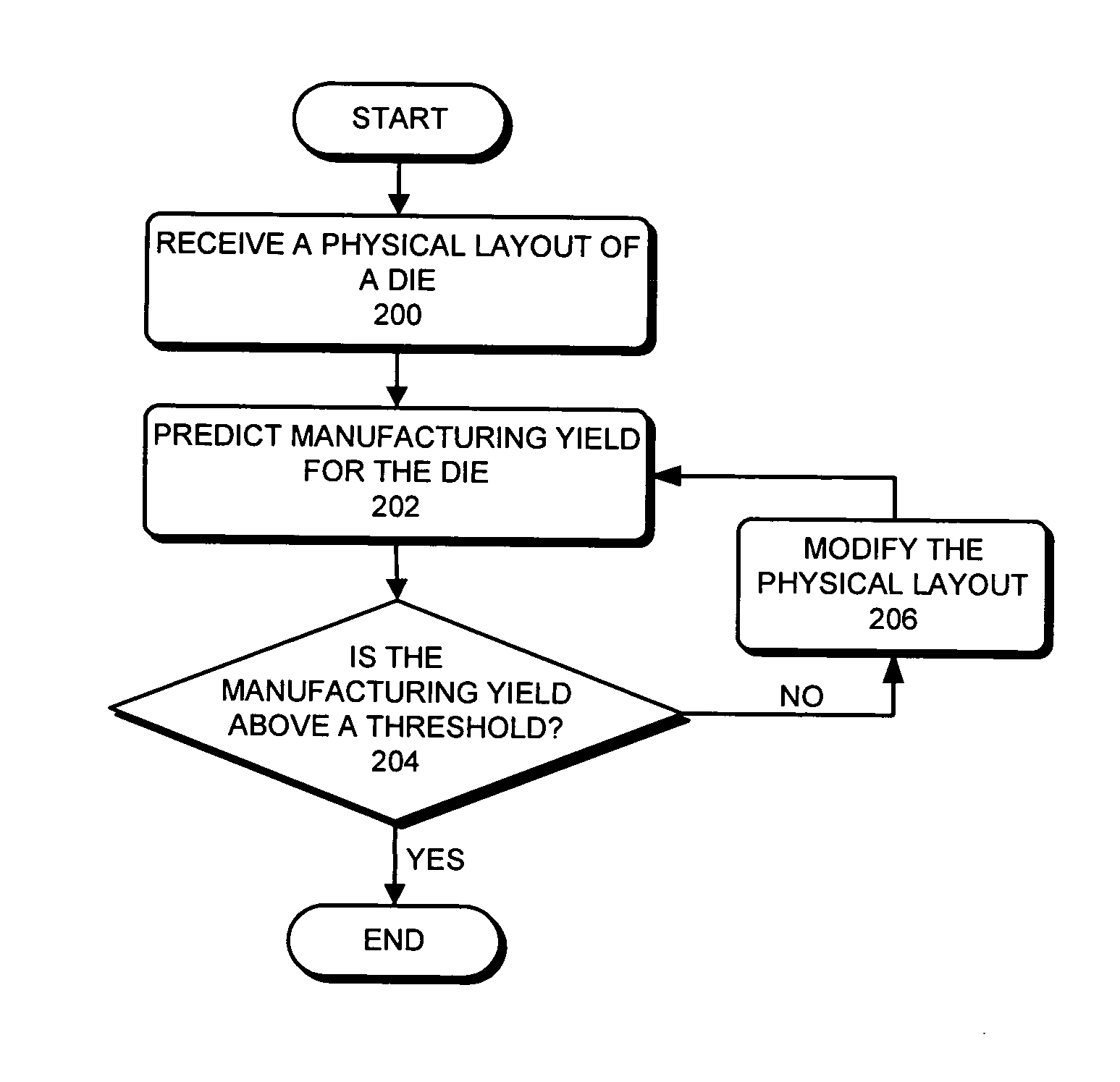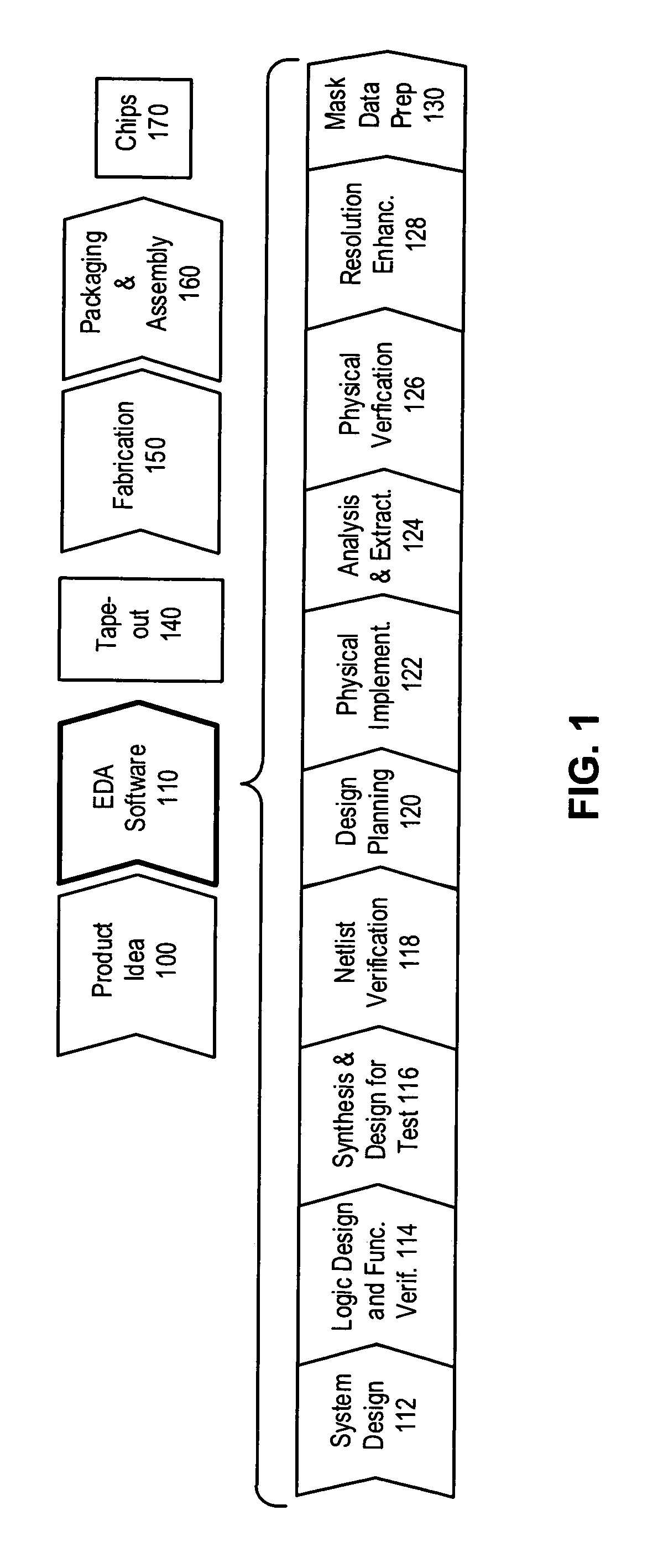Predicting IC manufacturing yield by considering both systematic and random intra-die process variations
a technology of manufacturing yield and intra-die variation, applied in the direction of total factory control, programme control, semiconductor/solid-state device details, etc., can solve the problems of significant significant decrease in manufacturing yield, and increase in manufacturing cost, so as to reduce computation complexity
- Summary
- Abstract
- Description
- Claims
- Application Information
AI Technical Summary
Benefits of technology
Problems solved by technology
Method used
Image
Examples
example
Cu Thickness in Chemical Mechanical Planerization (CMP)
[0085] During IC manufacturing, a quality characteristic is often used to describe or monitor the quality of an IC fabrication process, such as the CD in a lithography process and Cu thickness in a CMP process. In the following discussion, Cu thickness in CMP is used as an example. However, the discussion below is also applicable to other IC manufacturing process parameters.
[0086] Ideally, a CMP process should yield a constant Cu thickness across a wafer. Practically, the Cu thickness at any given location on the wafer is affected by a number of process variables as well as design variables. The process variables can include the incoming Cu deposition thickness, barrier deposition thickness, Cu polishing rate, barrier polishing rate, CMP down pressure, velocity and so on. The design parameters can include the layout density, layout perimeter sum, line width and so on. All of these process and design parameters vary at differen...
PUM
 Login to View More
Login to View More Abstract
Description
Claims
Application Information
 Login to View More
Login to View More - R&D
- Intellectual Property
- Life Sciences
- Materials
- Tech Scout
- Unparalleled Data Quality
- Higher Quality Content
- 60% Fewer Hallucinations
Browse by: Latest US Patents, China's latest patents, Technical Efficacy Thesaurus, Application Domain, Technology Topic, Popular Technical Reports.
© 2025 PatSnap. All rights reserved.Legal|Privacy policy|Modern Slavery Act Transparency Statement|Sitemap|About US| Contact US: help@patsnap.com



